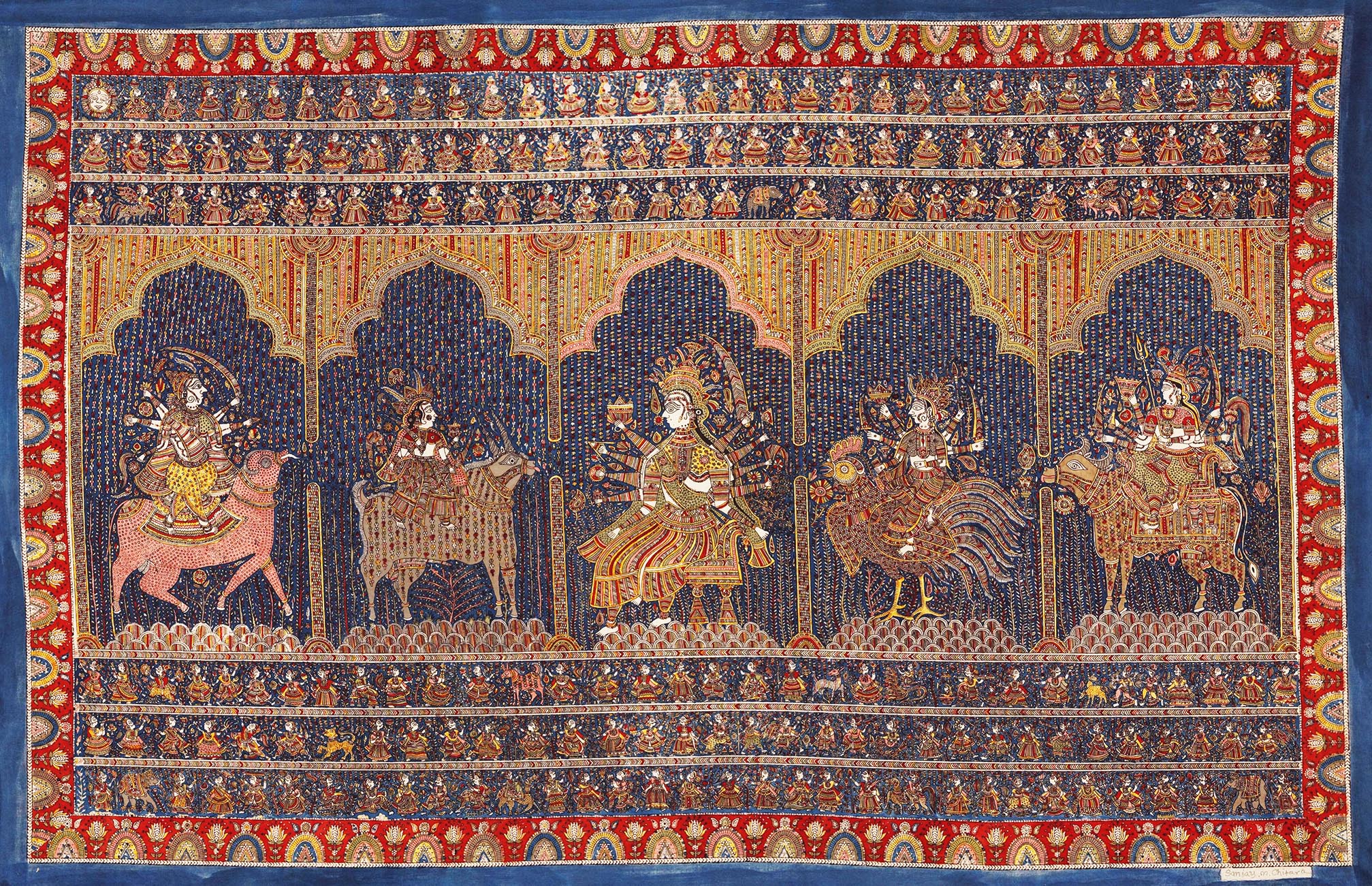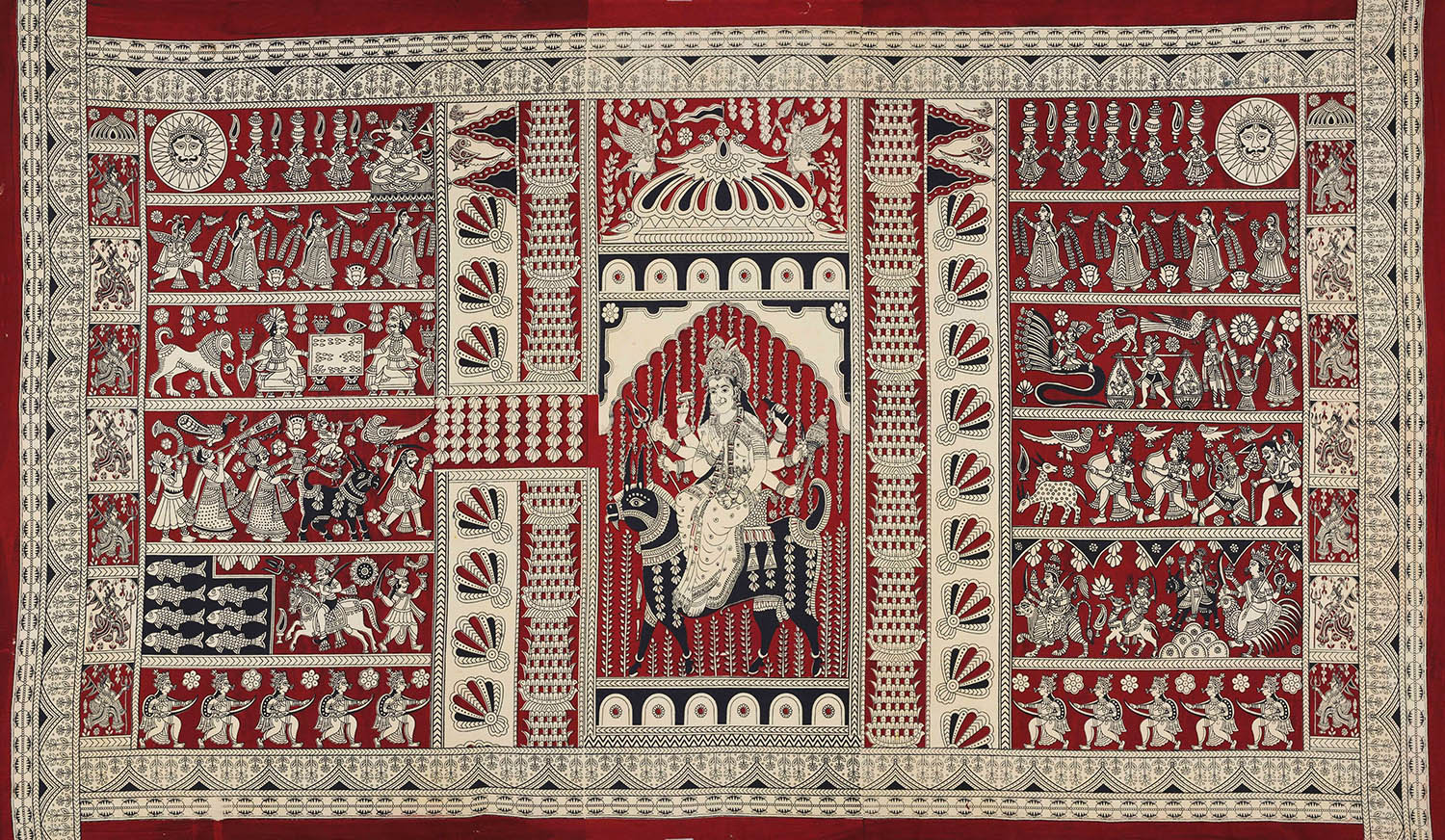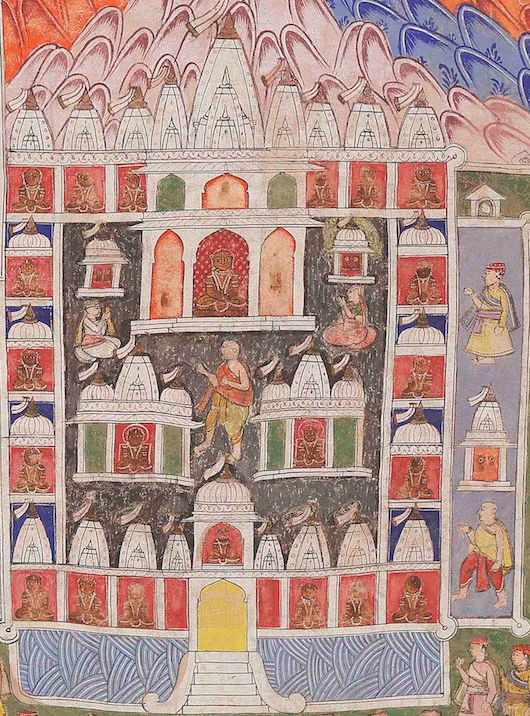You can tell a lot about an emperor from the loose change rattling about in the royal treasury. Was he cautious or a risk-taker? Devout or subversive? Powerful or simply a ‘puppet’? Much can be guessed from the face of the coins minted during his reign. Over the period from 1526 to 1857, as the fortunes of the Mughal empire went from shaky to glorious and then withered to decay, its currency too reflected these shifting sands.
Paul Abraham for Sarmaya Talks on decoding the Mughal empire through its coinage
Broadly, the coinage of the Mughals can be sorted into four phases: the wandering or regional phase lasted from 1526 to 1556 with emperors Babur and Humayun; the classical phase (1556-1707) saw leaders like Akbar, Jahangir, Shah Jahan and Aurangzeb; the decadent phase (1707-1720) began with Shah Alam I, ended with the start of Muhammad Shah’s reign and had as many as seven occupants of the throne who got there by massacring or blinding rivals; and finally, the quasi-Mughal phase (1720-1835) saw the issuing of ‘Mughal’ coins by regional powers in Awadh, Hyderabad and Rohilkhand, as well as enemies of the empire, like the Marathas, Sikhs, Rajputs, the French and the English. These coins carried the nominal consent of the ruling Mughal emperor and were issued in his name.
While the sun may have finally set on the empire only with the end of Uprising of 1857, the decline had begun in 1720. During Muhammad Shah’s three-decade rule the influence of the Emperor shrunk rapidly and local powers, both Mughal and non-Mughal, rushed in to claim imperial authority.
But we’re getting ahead of ourselves. Let’s start at the very beginning with…
BABUR, THE TRADITIONALIST
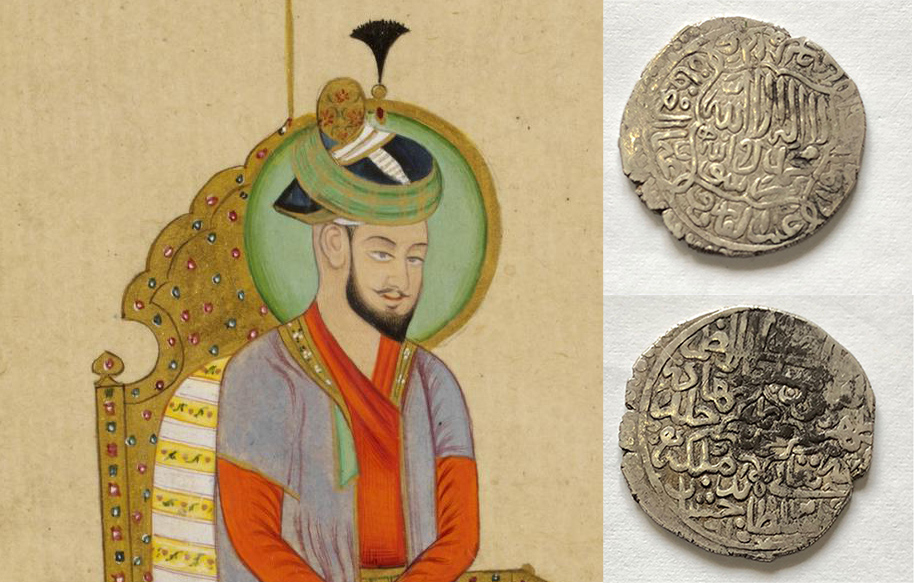
Silver Shahrukhi issued by Babur from the Badakshah mint
The Mughal empire was founded by the Timurid adventurer, Zahir-ud-din Muhammad Babur with the defeat of Ibrahim Lodhi on the dusty battlegrounds of Panipat on 21 April 1526, which gave the victor control over Agra and Delhi. Twenty-two years before that, driven by the humiliating loss of his ancestral kingdom of Ferghana in Central Asia to his Uzbeki rivals, Babur had conquered Kabul. Like a consummate politician, Babur chose to move to greener pastures south of the Hindu Kush and claim Hindustan as a legacy of his great ancestor, Timur Lang, the great Turco-Mongol conquistador of the fourteenth century. The trials and tribulations of his career gave our first Mughal emperor very little time for administrative matters and thus despite the drastic relocation of his kingdom, he continued to issue the staple Timurid currency coins known as the ‘Shahrukhi’. Named after Shahrukh Mirza, Timur’s eldest son, the Shahrukhis were essentially thin broad-flanned coins imprinted with the Sunni Kalima or credo on its obverse at the centre with the names of the first four caliphs around it. The reverse had the king’s Islamic name and titles along with the date in the Hijri era and the name of the minting town. The mint names on the reverse help us understand the actual extent of each ruler’s domain. Babur continued to issue Shahrukhis throughout his political career from Kabul to Agra, where he died on 26 December 1530.
HUMAYUN, THE EXILED
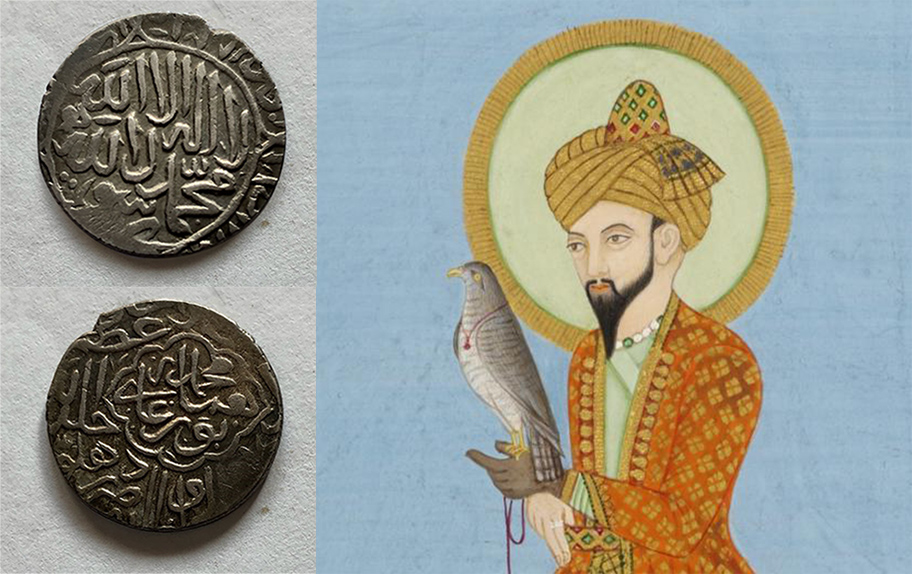
Silver Shahrukhi issued by Humayun from the Delhi mint
The Shahrukhi standard was continued by Babur’s immediate successor, Humayun and even by his grandson, Akbar, for the first three years of his five-decade reign. The Mughal empire was unsteady in this initial period, especially under the talented but fickle-minded Humayun. Humayun’s eccentricities led to his downfall; he was deposed by a rival Afghan leader, Sher Shah Suri in 1540 and exiled to the court of the Persian ruler, Shah Tahmasp, whose help he sought in regaining his lost kingdom. In Persia, Humayun was often encouraged to turn to the Shia faith. Thus we find some later coins issued by the Mughal from Kandahar proclaiming Shah Tahmasp as his overlord and featuring the Shia Kalima—a compromise Humayun accepted to survive at the Safavid court.
During Humayun’s exile, his rival, Sher Shah innovated a new silver coin christened the ‘rupaiya’—which survived the Afghan ruler by over four-and-half centuries to become the modern rupee. One of the major reforms attributed to Sher Shah is a move from base metal alloys to bimetallic currency, like the silver rupaiya and a copper coin called the paisa (the Mughals would call it daam).
AKBAR, THE ADVENTURER
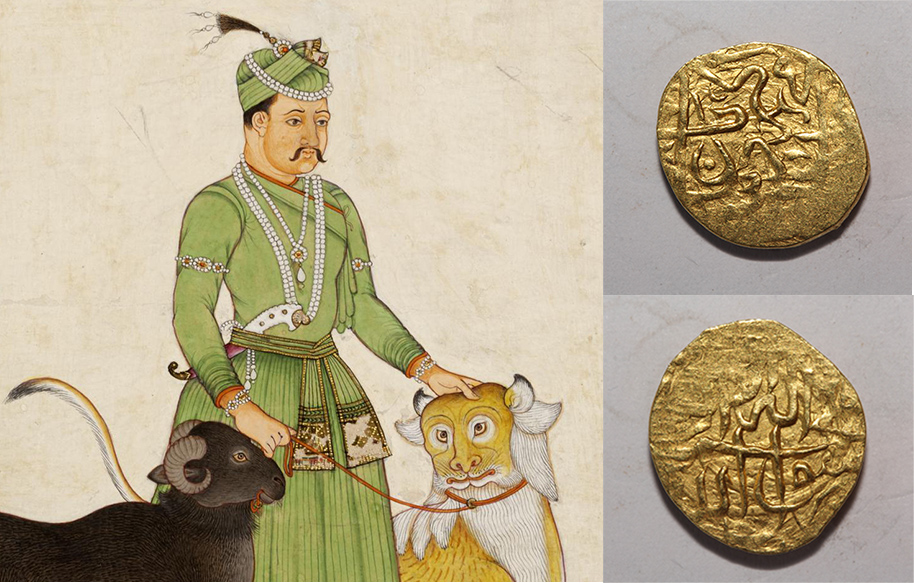
One-tenth gold mohur issued by Akbar
Sher Shah’s system was adopted by Akbar who ditched the Shahrukhi for the rupaiya and also introduced gold coins called asharafi (mohurs). This trimetallic currency had the following market exchange rate: 35 to 40 dams were equal to one silver rupee and 9 silver rupees were equal to 1 asharafi or mohur. Akbar also issued heavier mohars worth 10 and 12 rupees and experimented with the shape of coins, issuing square and even polygonal ones called mehrabi.
Beginning with Akbar there followed a two-hundred-year period when Mughal currency dominated the Indian subcontinent. Much of the beauty and splendour it came to be known for was acquired during his reign. After a few years spent issuing the insipid Shahrukhi coins, the emperor employed the best minds in his kingdom to reform the currency on various technological fronts, chief among which was the refining of gold and silver to a degree higher than his predecessors had achieved. Akbar hired the best Arabic-Persian script engravers to make the dies of his coinage with beautiful calligraphic legends in negative. According to the official gazette written by his most trusted advisor, Abu’l Fazl, one Ali Ahmad of Delhi, an expert engraver, was employed at the imperial mint for the princely sum of 600 daams a month!
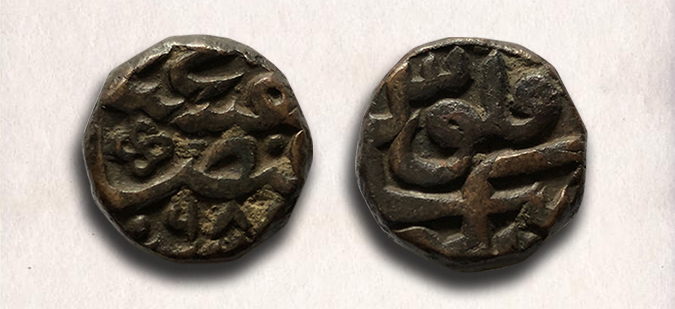
Copper daam issued by Akbar from the Bhakkar mint
Mughal coins came to be made in all three metals at the imperial mints established in Agra, Delhi, Ahmedabad, Lahore and other important towns. Akbar’s period also saw huge gold coins or mohurs being minted in multiple units of 5, 50 and 100 tolas, a policy that was continued by his successor, Jahangir. One such coin, the heaviest of its kind in the world at 1000 tolas (around 12 kg), is part of the collection of the Museum of Islamic Art in Kuwait.
Akbar’s eclectic religious beliefs are also reflected on his coins; his initial coins were issued with the Sunni Kalima till 1585 but in the thirtieth year of his reign, he founded a new religion called Din-i-Illahi and issued coins with its credo: ‘Allah hu Akbar Jalla Jalaluhu’ (God is great, may His glory be glorified). He also began dating his coins as per a new ‘Illahi era’, which replaced the earlier Hijri era. It was Akbar who introduced the practice of inscribing on coins Persian poetry praising the ruler and this was adopted by most of his successors, including the dour Aurangzeb.
JAHANGIR, THE POET
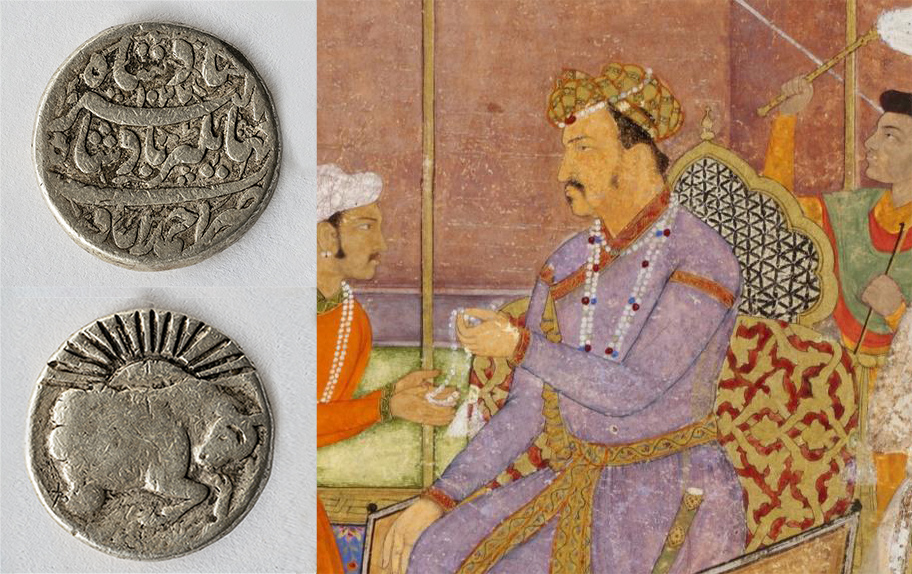
Zodiac coin (Taurus) issued by Jahangir
Akbar’s successor, Jahangir was equally unorthodox and eclectic with his coinage. He began his reign with gold coins featuring a realistic portrait of his father. He went on to rile up the clergy further by issuing coins with the images of various zodiac signs to illustrate the date as well as portraits of himself with a cup of wine in his hand. The only grace he afforded the clergy was the partial resumption of the use of the Hijri era on his coins. Jahangir issued many gold and silver coins with poetic verses on them and was the only Mughal emperor to bestow the right of coinage to his royal consort. Nur Jahan would be the first queen after Razia Sultana to issue coins.
Numismatist Shailendra Bhandare of the Ashmolean on the treasures of Jahangir’s coinage
Posted by Shailen Bhandare on Thursday, 23 April 2020
SHAH JAHAN, THE DUTIFUL

Silver mishqal issued by Shah Jahan—this denomination was discontinued during his reign
Shah Jahan began his rule by reintroducing the Kalima on his coinage and using the title ‘Sahib-e-Qiran Sani’ (the Second Lord of Fortunate Astronomic Conjunctions) paraphrasing an earlier title used by Timur on his coins. Shah Jahan tried to appease the orthodox clergy by ordering the melting of Jahangir’s portrait and zodiac coins. This is what makes the rare surviving specimens so precious.
AURANGZEB, THE AUSTERE
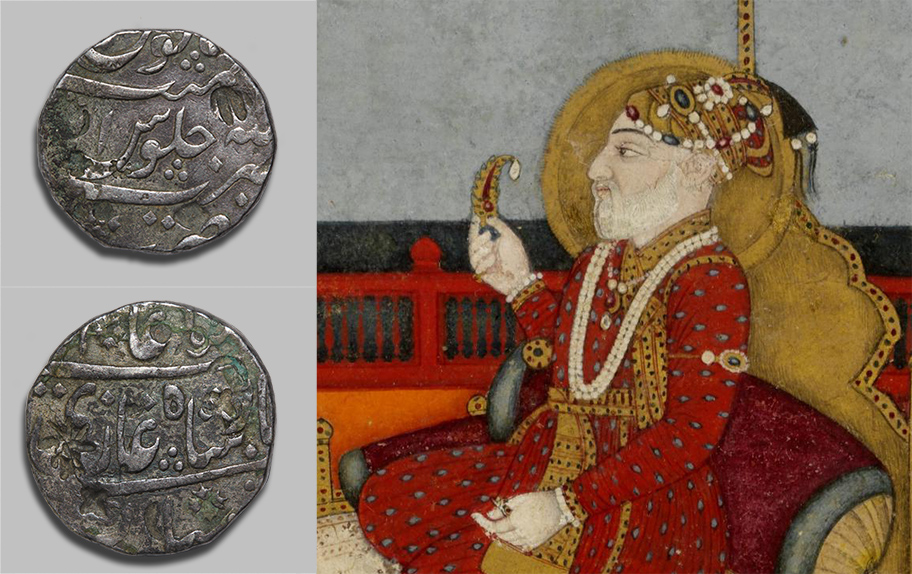
Aurangzeb forbade the use of Kalima on coins altogether to prevent its defiling by the touch of non-believers. He preferred to employ a standard poetic verse praising him and his rule on the obverse and devised a formula for the reverse indicating the location of the mint and the regnal year. From this point on, Mughal coinage acquired a rather staid appearance with little space for calligraphers to flex their creativity.
BEGINNING OF THE END
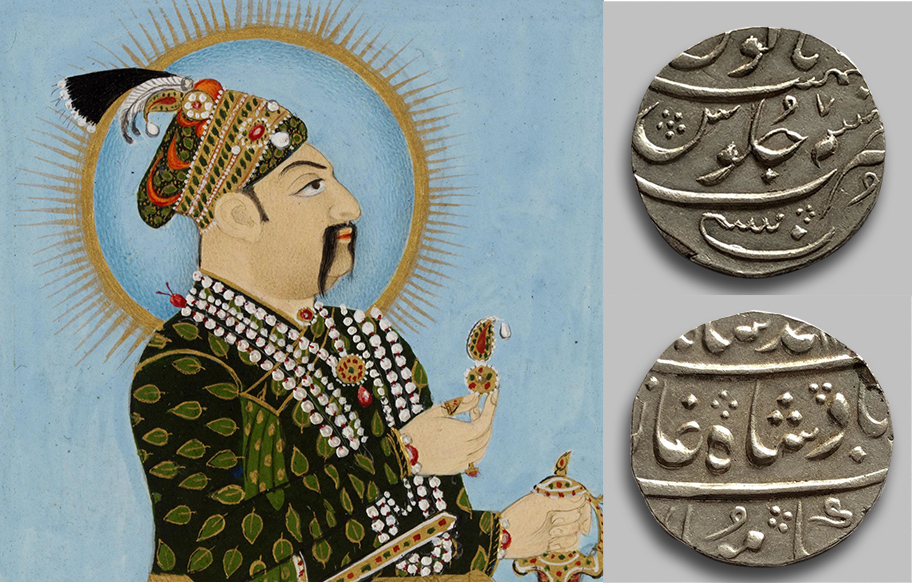
Silver rupee issued by Muhammad Shah from the Mumbai mint
Aurangzeb’s death in 1707 set in motion the downward slide of the empire with the emergence of regional and foreign powers who slowly usurped the minting privileges of the Mughal emperor. The minting rights of Chinnapattan (Madras) for instance were attained by the English by bribing Aurangzeb’s youngest and favourite son, Prince Kam Bakhsh. A latter emperor, Emperor Farrukhsiyar, began the ruinous policy of issuing farmaans or edicts for minting rights to interested powers—the East India Company obtained the rights to mint coins in the name of the Mughal emperor from Bombay in 1717 after supplying him cartloads of English novelties as a bribe.
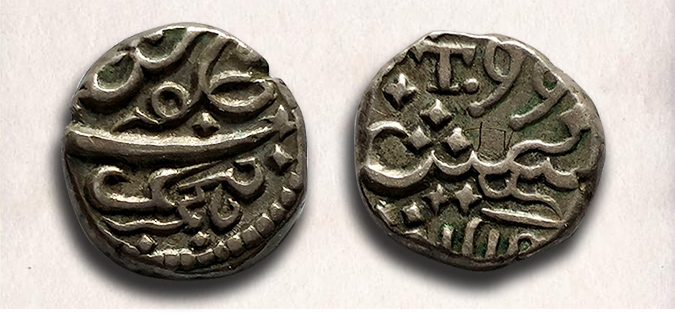
One-tenth silver rupee issued by the East India Company in the name of Alamgir II from Tellicherry mint
The slide accelerated during the reign of Muhammad Shah when Delhi was sacked by the Persian adventurer Nadir Shah in 1739 A.D. Muhammad Shah’s subordinates like the Nizam-ul-Mulk of Hyderabad and Saadat Ali Khan, Nawab of Awadh retreated to their provincial capitals to create their own kingdoms and issue their own coinages. Mughal power was finally shattered when Emperor Shah Alam II lost the Battle of Buxar in 1764 A.D. to the East India Company’s army and became a puppet in the hands of the British who entered Delhi in 1803 A.D. The British continued to issue coins in Shah Alam’s name till his death and his successor Muhammad Akbar II forfeited all minting rights in 1835 when the East India Company substituted the Mughal emperor’s name with that of the English monarch and introduced English legend coins as the official Indian currency.
The last Mughal Emperor, Bahadur Shah ‘Zafar’ briefly became the central figure of the Uprising of 1857 and silver rupees were issued in his name by the rebel soldiers who re-crowned him the ‘Emperor of Hindustan’. However, he was deposed by the British in September 1857 and exiled to Rangoon, bringing curtains down not only on the Mughal empire but also its famed coinage.
Dr Mahesh A Kalra is the Director of CENNUMIS or Centre for Numismatic Information & Studies
Images: © Victoria and Albert Museum, London; all coins from the Sarmaya collection

